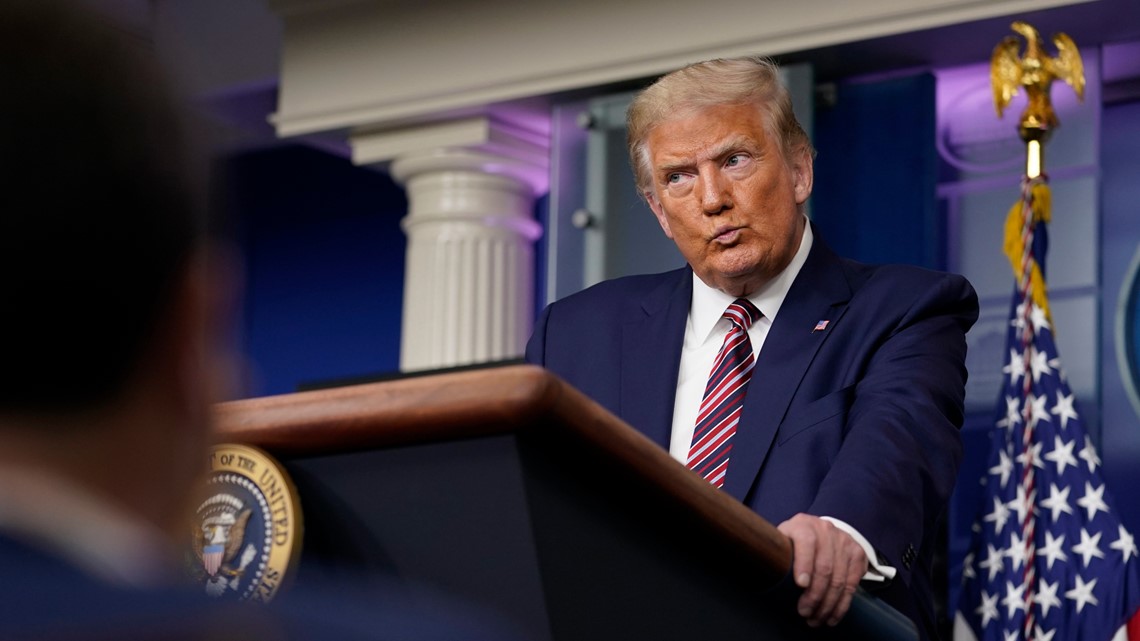WASHINGTON D.C., DC — A New York Times report that President Donald Trump paid just $750 in federal income tax the year he entered the White House — and, thanks to colossal losses, no income tax at all in 11 of the 18 years that the Times reviewed — served to raise doubts about Trump's self-image as a shrewd and successful businessman.
That Sunday's report came just weeks before Trump's re-election bid served to intensify the spotlight on Trump the businessman — an identity that he has spent decades cultivating and that helped him capture the presidency four years ago in his first run for political office. The Times’ report deepens the uncertainty surrounding a tumultuous presidential campaign set against the backdrop of a viral pandemic, racial unrest in American cities and a ferocious battle over the Supreme Court seat left vacant by the death of Justice Ruth Bader Ginsburg.
Since entering the White House, Trump has broken with tradition set by his predecessors by not only refusing to release his tax returns but by waging a legal battle to keep them hidden. The Times report suggests why that might have been so. It reported that many of Trump’s top businesses are losing money, even as those losses have helped him shrink his federal tax bill to essentially nothing.
Eugene Steuerle, a tax expert at the Urban Institute, said he wasn’t surprised that it turns out that Trump had paid almost no federal income tax. Most commercial real estate developers deduct large interest payments on their debts from taxable income, thereby lowering their tax bills. Typically, they also often avoid capital gains taxes by plowing profits from the sale of one building into the purchase of another.
“Most tax experts expected you would find little in the way of tax payments by President Trump,” said Steuerle, who served as a Treasury Department official under President Ronald Reagan.
The Times noted that Alan Garten, a lawyer for the Trump Organization, said of the Times report that “most, if not all, of the facts appear to be inaccurate” and asked for the documents on which the reporting was based, which the Times declined to provide in order to protect its sources. The Times said Garten then directly disputed only the amount of taxes Trump had paid.
Here are some key takeaways from the Times’ reporting:
TRUMP PAID JUST $750 IN TAXES IN BOTH 2016 and 2017
The newspaper said Trump initially paid $95 million in taxes over the 18 years it studied. But he managed to recover most of that money by claiming — and receiving — a stunning $72.9 million federal tax refund. According to the Times, Trump also pocketed $21.2 million in state and local refunds, which are typically based on federal filings.
Trump's outsize refund became the subject of a now-long-standing Internal Revenue Service audit of his finances. The audit was widely known. Trump has claimed it was the very reason why he cannot release his returns. But the Times report is the first to identify the issue that was mainly in dispute.
As a result of the refund, Trump paid an average $1.4 million in federal taxes from 2000 to 2017, the Times reported. By contrast, the average U.S. taxpayer in the top .001% of earners paid about $25 million annually over the same timeframe.
TRUMP HAS FINANCED AN EXTRAVAGANT LIFESTYLE WITH THE USE OF BUSINESS EXPENSES
From his homes, his aircraft — and $70,000 on hair styling during his television show “The Apprentice” — Trump has capitalized on cost incurred from his businesses to finance a luxurious lifestyle.
The Times noted that Trump's homes, planes and golf courses are part of the Trump family business and, as such, Trump classified them as business expenses as well. Because companies can write off business expenses as deductions, all such expenses have helped reduce Trump’s tax liability.
MANY OF HIS BEST-KNOWN BUSINESSES ARE MONEY-LOSERS
The president has frequently pointed to his far-flung hotels, golf courses and resorts as evidence of his success as a developer and businessman. Yet these properties have been draining money.
The Times reported that Trump has claimed $315 million in losses since 2000 on his golf courses, including the Trump National Doral near Miami, which Trump has portrayed as a crown jewel in his business empire. Likewise, his Trump International Hotel in Washington has lost $55 million, the Times reported.
FOREIGN VISITORS HAVE HELPED SUPPORT TRUMP'S PROPERTIES
Since Trump began his presidential run, lobbyists, foreign governments and politicians have lavished significant sums of money on his properties, a spending spree that raised questions about its propriety and legality.
The Times report illustrates just how much that spending has been: Since 2015, his Mar-a-Lago resort in Florida has taken in $5 million more a year from a surge in membership. The Billy Graham Evangelistic Association spent at least $397,602 in 2017 at Trump's Washington hotel. Overseas projects have produced millions more for Trump — $3 million from the Philippines, $2.3 million from India and $1 million from Turkey.
TRUMP WILL FACE FINANCIAL PRESSURE AS DEBTS COME DUE
Trump seems sure to face heavy financial pressures from the enormous pile of debt he has absorbed. The Times said the president appears to be responsible for $421 million in loans, most of which will come due within four years. On top of that, a $100 million mortgage on Trump Tower in New York will come due in 2022.



